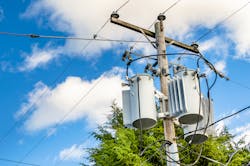With some kinds of activities, if you get it wrong the first time, you can do it over. Working around power lines is not one of those activities. If your safety practices are anything but flawless, your risk of electrocution is high.
One key to success here is to have the right attitude. Simply using the personal protective equipment (PPE) your employer “makes” you use does not protect you. Even if you use it correctly, for example rolling up your gloves to test them rather than blowing into them to test them, PPE is not your primary defense against power line hazards.
PPE is that final layer of protection after you’ve executed all the other safety procedures and are still being mindful of hazards while working. For example, you perform lockout/tagout on a power cable. Maybe it has damaged insulation or is backfed. Use a meter to verify the cable has been de-energized, and then apply safety grounds to ensure it stays de-energized.
About the Author

Mark Lamendola
Mark is an expert in maintenance management, having racked up an impressive track record during his time working in the field. He also has extensive knowledge of, and practical expertise with, the National Electrical Code (NEC). Through his consulting business, he provides articles and training materials on electrical topics, specializing in making difficult subjects easy to understand and focusing on the practical aspects of electrical work.
Prior to starting his own business, Mark served as the Technical Editor on EC&M for six years, worked three years in nuclear maintenance, six years as a contract project engineer/project manager, three years as a systems engineer, and three years in plant maintenance management.
Mark earned an AAS degree from Rock Valley College, a BSEET from Columbia Pacific University, and an MBA from Lake Erie College. He’s also completed several related certifications over the years and even was formerly licensed as a Master Electrician. He is a Senior Member of the IEEE and past Chairman of the Kansas City Chapters of both the IEEE and the IEEE Computer Society. Mark also served as the program director for, a board member of, and webmaster of, the Midwest Chapter of the 7x24 Exchange. He has also held memberships with the following organizations: NETA, NFPA, International Association of Webmasters, and Institute of Certified Professional Managers.
